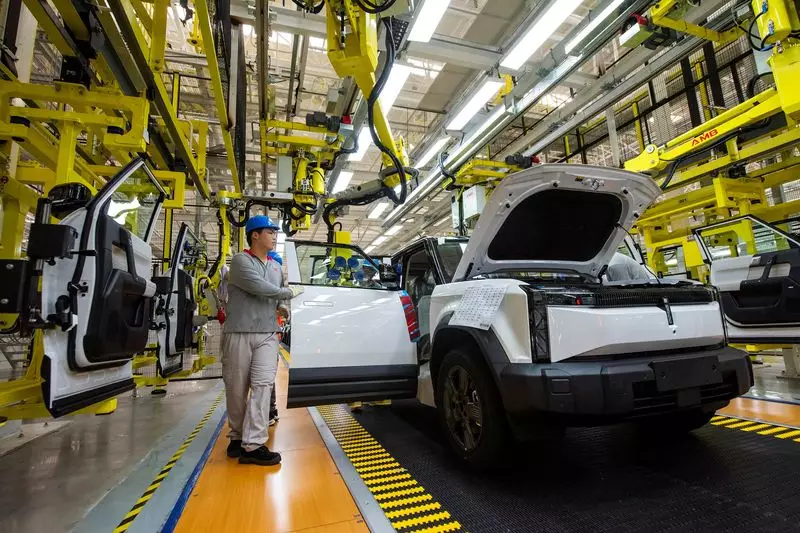China’s manufacturing activity showed a decline for the third consecutive month in July, according to an official factory survey. The official purchasing managers’ index (PMI) dropped to 49.4 in July from 49.5 in June, falling below the 50-mark that separates growth from contraction. This decline has raised concerns about the need for Beijing to introduce additional stimulus measures as the country grapples with a prolonged property crisis and job insecurity that are weighing on economic growth.
The slowdown in manufacturing activity comes at a time when China’s economy is facing various challenges. The world’s second-largest economy reported slower-than-expected growth in the second quarter, with particular concerns surrounding the consumer sector. Retail sales growth hit an 18-month low due to deflationary pressures, prompting businesses to cut prices on various goods, including cars, food, and clothes. This trend is indicative of weakening consumer demand, which is crucial for sustaining economic growth.
While China’s solid exports have provided some support to the economy in recent months, the escalating trade tensions with its partners pose a significant threat to the country’s economic prospects. The recent increase in outbound shipments has been a positive development for factory managers, but uncertainties about import tariffs are clouding the outlook. With a growing number of trading partners considering imposing tariffs on Chinese goods, the sustainability of export-led growth remains uncertain.
The non-manufacturing sector, which includes services and construction, also showed signs of slowing growth in July. This is indicative of weakening domestic demand for services, underscoring the challenges posed by the ongoing crisis in the property sector. Declining property prices have had a negative impact on household wealth, as a significant portion of household assets are tied to real estate. The government is expected to introduce additional measures to support the property market following a meeting of the Politburo.
In response to the challenging economic conditions, China has signaled its intention to implement macroeconomic policies to stimulate consumption and boost domestic demand. State media reports suggest that the government will focus on counter-cyclical adjustments to address the economic slowdown. The announcement of ultra-long treasury bonds to support a consumer trade-in program is seen as a step in the right direction, but analysts believe that more robust measures may be needed to spur a meaningful economic recovery.
Overall, China’s manufacturing and non-manufacturing sectors are facing significant headwinds, with weak domestic demand and external uncertainties posing challenges to the country’s economic outlook. As policymakers navigate these challenges, the focus will be on implementing targeted stimulus measures to support key sectors and sustain economic growth in the face of mounting pressures.

